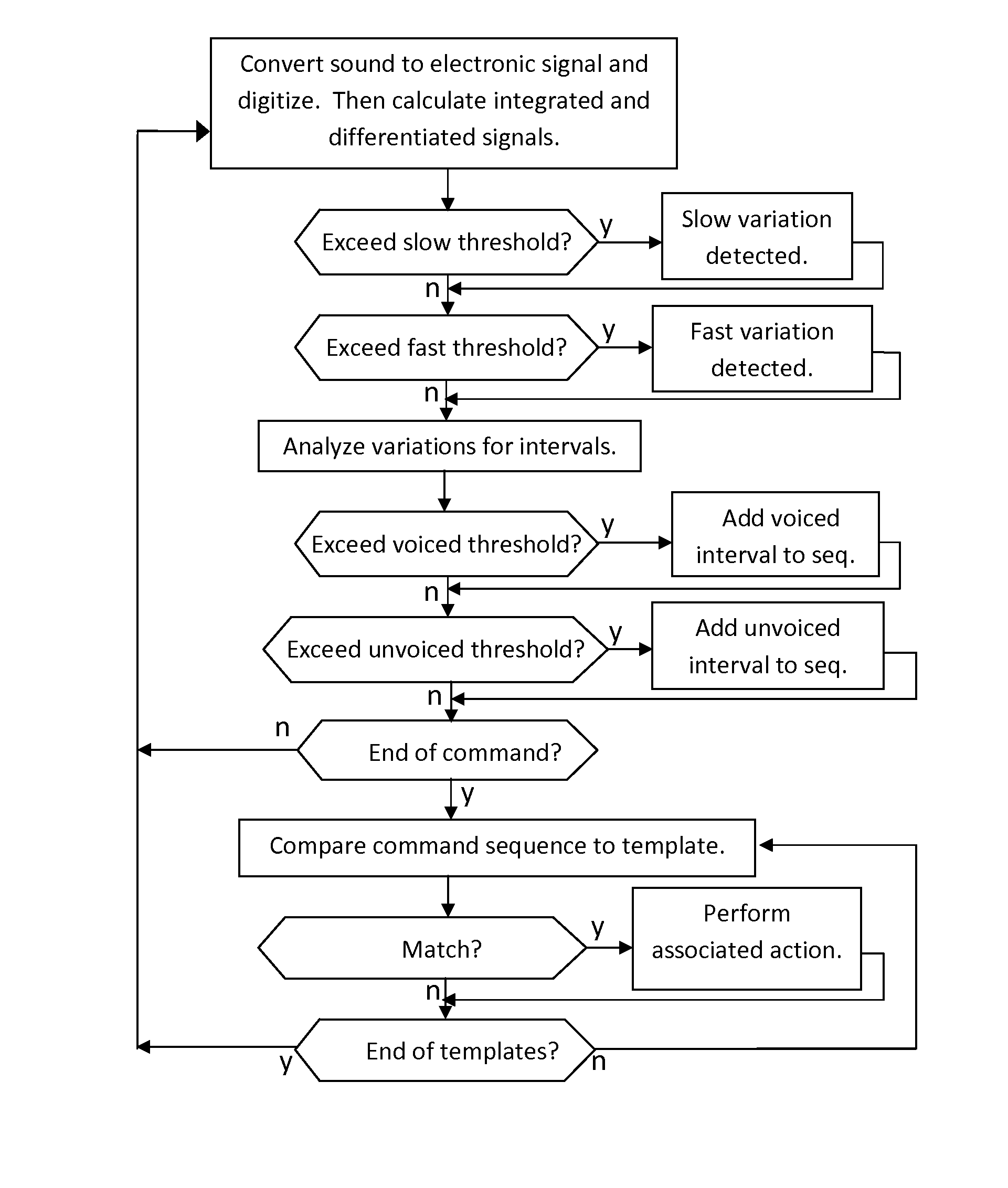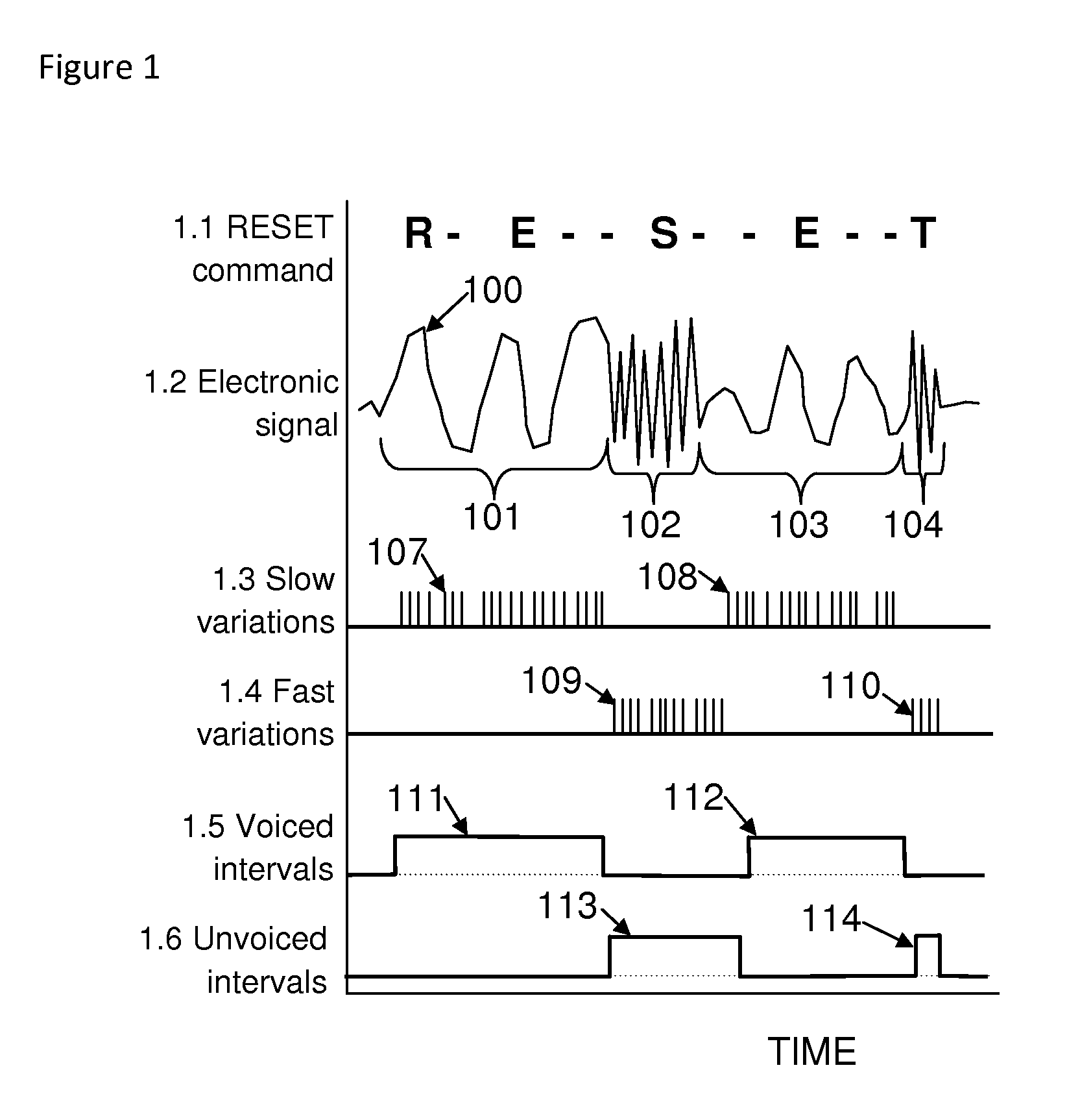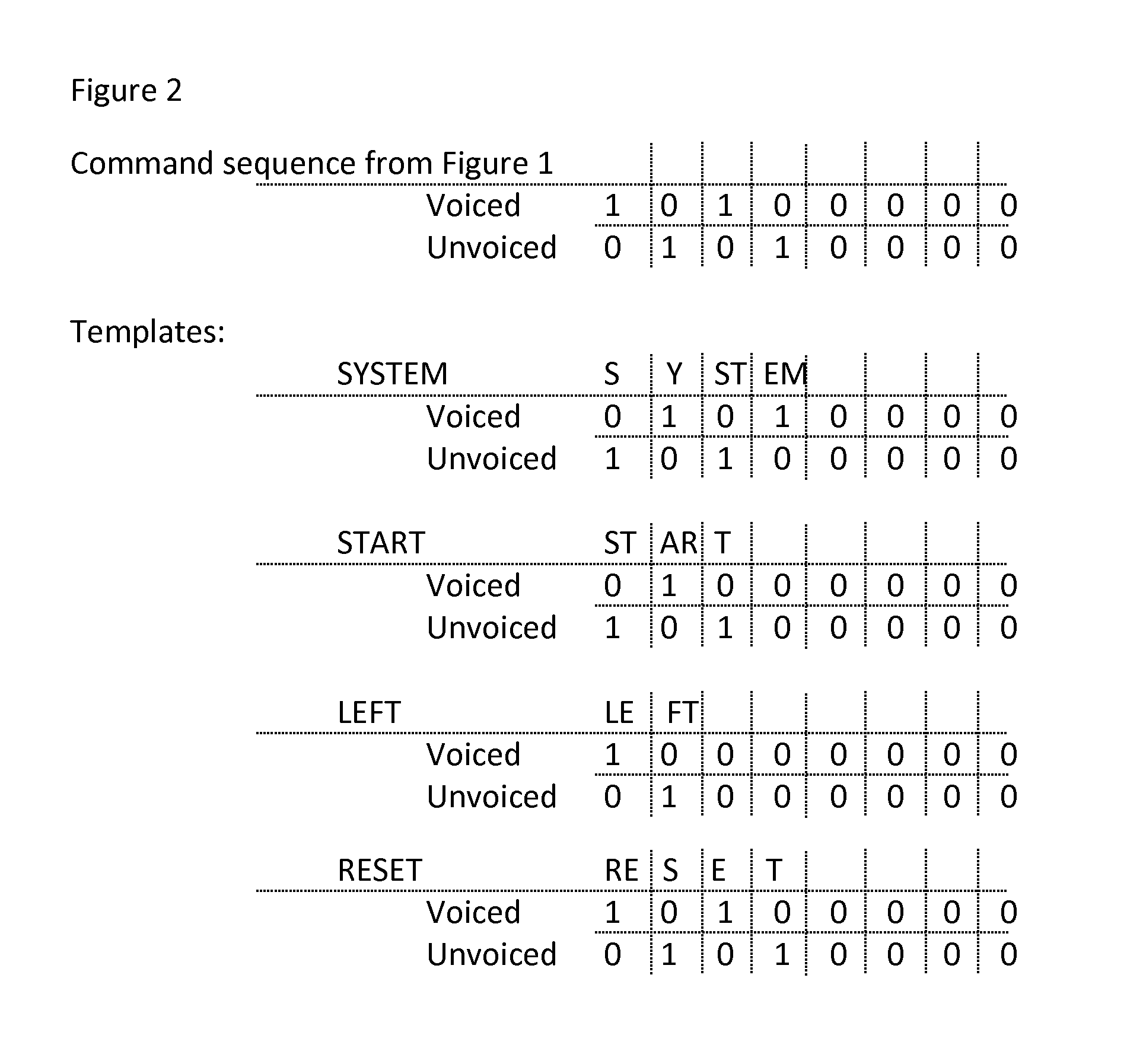Identifying spoken commands by templates of ordered voiced and unvoiced sound intervals
a voice and command technology, applied in the field of voice activation technology, can solve the problems of not being able to discriminate on frequency alone, many commands consumers expect to use cannot be used on frequency alone, and not being able to accept awkward commands or arbitrary limitations. , to achieve the effect of minimal hardware and minimal softwar
- Summary
- Abstract
- Description
- Claims
- Application Information
AI Technical Summary
Benefits of technology
Problems solved by technology
Method used
Image
Examples
Embodiment Construction
[0076]FIG. 1 shows graphs or traces, similar to oscilloscope traces, that display key signals related to command processing. These traces illustrate how the fast and slow variations in the sound signal are used to identify the voiced and unvoiced sound intervals in the command.
[0077]The first section, labeled “1.1 RESET command”, shows the letters of the spoken command RESET, but spread out so that they correspond to the timing of the other traces. The RE portion of the command is a voiced sound, then the S portion is unvoiced, followed by the second E which is voiced, followed by the unvoiced T sound. To recognize the command, all four sound portions must be detected and the sound type of each interval must be identified.
[0078]The trace labeled “1.2 Electronic signal”, shows an analog electronic signal 100 versus time. The electronic signal 100 is derived from the command sounds using a microphone and an amplifier without filtering. The electronic signal 100 includes four distinct ...
PUM
 Login to View More
Login to View More Abstract
Description
Claims
Application Information
 Login to View More
Login to View More - R&D
- Intellectual Property
- Life Sciences
- Materials
- Tech Scout
- Unparalleled Data Quality
- Higher Quality Content
- 60% Fewer Hallucinations
Browse by: Latest US Patents, China's latest patents, Technical Efficacy Thesaurus, Application Domain, Technology Topic, Popular Technical Reports.
© 2025 PatSnap. All rights reserved.Legal|Privacy policy|Modern Slavery Act Transparency Statement|Sitemap|About US| Contact US: help@patsnap.com



